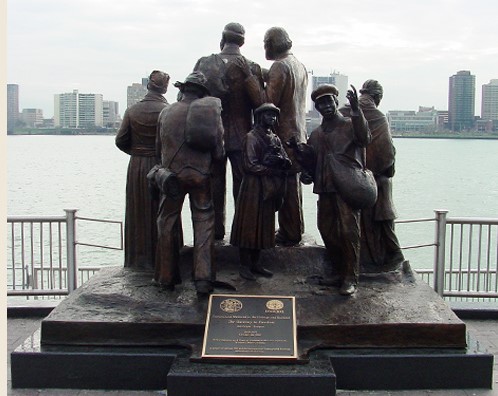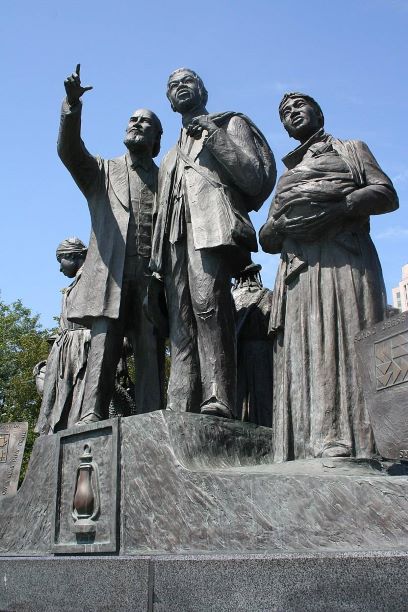The Fugitive Slave Routes
I met a man in Cleveland yesterday who, in conversation, mentioned that his former office was in a building used in the Underground Railroad. The basement still has the extremely small rooms where runaway slaves spent their last days in the United States. From there, they would secretly move to “Pier Nine” and make the boat trip across Lake Erie to Canada.
So today might be a good day to look at Michigan’s role in the underground railroad and the preserved stations within this state. The term is applied to the practice of transporting fugitive slaves from the South into Canada.
Michigan has two sites listed in the National Park Service’s Aboard the Underground Railroad: A National Register of Historic Places Travel Itinerary and both places are open to the public. One site is the Second Baptist Church on Monroe Street in the Greektown neighborhood of Detroit. “Second” Baptist was formed in 1836 by 13 former slaves who left Detroit’s white “First” Baptist Church.
The other site is the Dr. Nathan Thomas house in Schoolcraft. The Thomas house was a frequent stop for runaway slaves, who followed a route north from Indiana and Ohio, and then east to Detroit.
A third site perhaps should be on the list. The “slave room” at Bear Cave Resort in Buchanan is a cave hidden behind a waterfall in the St. Joseph River. The cave was frequently used as a stop on the escape route.

A problem with the historic preservation of the underground railroad is that it was not a fixed series of places along the routes from the slavery states to Canada. The railroad was an ever-changing series of safehouses, barns and other hiding places, referred to as “stations” and “depots”. An estimated 40,000 slaves escaped on the railroad from 1830 to 1860.
The most frequent routes are mapped on the Michigan History’s magazine Mitten.
Interactive Journey
A National Geographic website has an interesting interactive journey on the railroad from Maryland, through Delaware, Pennsylvania and New York, and the Lake Erie voyage to Canada.
The Northwest Ordinance of 1787
Slavery was always illegal in Michigan. With the Northwest Ordinance in 1787, Congress established a territory north of the Ohio River and east of the Mississippi. It provided for the creation of territories within this region, and for the formation of “at least three but not more than five” states. (Actually, 5 ½ states were created in this region – Michigan, Ohio, Indiana, Illinois, and Wisconsin, plus the portion of Minnesota east of the Mississippi.)
The ordinance prohibited slavery within the territory, even though slavery was then still legal in many states in the northeast.
Fugitive Slave Act of 1850
Michigan and other northern states were once destinations for runaway slaves. However, the Fugitive Slave Act of 1850 made it legal for bounty hunters to chase runaways into free states, and illegal for anyone to help escapees. The Fugitive Slave Act was part of the compromise which admitted California into the Union as a free state, and ended slave trading in the District of Columbia.
The act was a disaster for free black communities in the North, since the slave catchers often kidnapped legally-free blacks as well as fugitives. A captured runaway could not testify on his behalf and was not entitled to a trial. So how could a legally-free black prove that he was not a runaway?
The Fugitive Slave Act infuriated many in the North, and Northern resistance equally infuriated many in the South, and thus fueled the tensions which led to the Civil War.

The photograph above and the photo at the top of the page are of the Gateway to Freedom International Memorial of the Underground Railroad in Detroit along the Detroit River. The photo at the top of the page is from the riverfront. The photograph above shows the runaway slaves looking across the Detroit River to Windsor, Ontario, and freedom in Canada.
